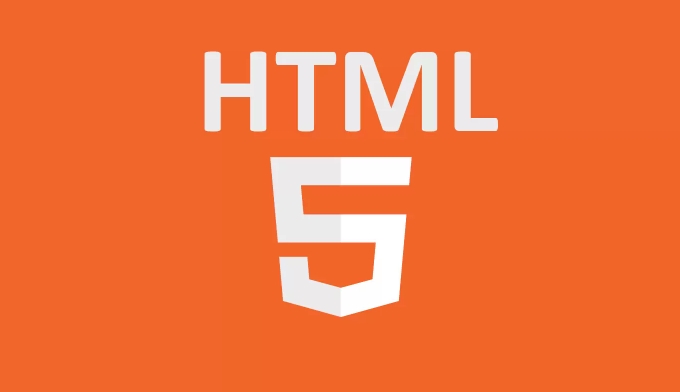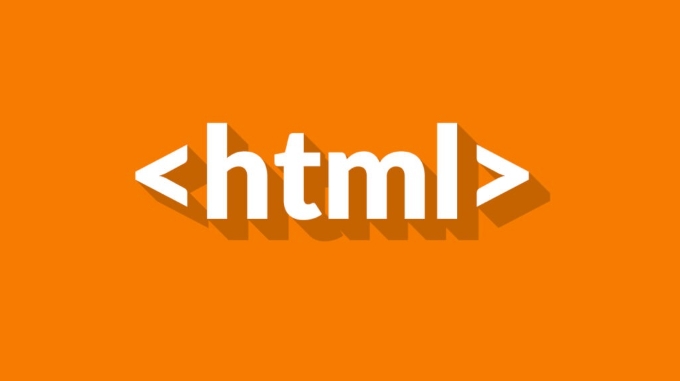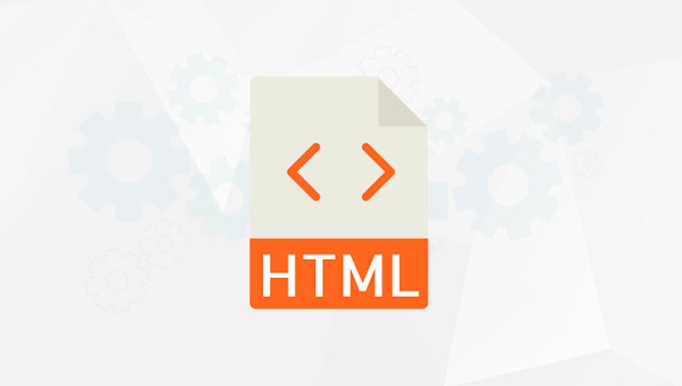 Web Front-end
Web Front-end
 HTML Tutorial
HTML Tutorial
 How to correctly use heading levels (h1-h6) for SEO and accessibility?
How to correctly use heading levels (h1-h6) for SEO and accessibility?
How to correctly use heading levels (h1-h6) for SEO and accessibility?
Jul 14, 2025 am 02:30 AMThe correct title hierarchy (H1-H6) can improve SEO and readability. First, each page should have only one H1 as the core theme; second, the title should be progressive in the order of H1→H2→H3→… to reflect the content structure; further, H2 to H6 should be reasonably nested to avoid skipping grades; finally, the title should not be used to control styles, but should be visually effected through CSS.

Title level (H1-H6) is not just a tool for web page layout. If used correctly, it can improve SEO performance, but also make the content easier to read and more friendly. Especially for search engines and screen reader users, a reasonable title structure is like a navigation diagram, helping them quickly understand the logic of the page content.

Only one H1 per page
This is the most basic and easiest point to be overlooked. H1 should represent the core theme of the page, such as the title of a blog post, or the product name of a product page. Multiple H1s will confuse search engines and will also affect the browsing experience of assistive technology users.
- If you are writing HTML by yourself, check if only one
<h1></h1>tag appears. - When using CMS or editor, be careful whether the default template will automatically generate H1 and avoid repeated additions.
Title levels should be used in order
Many people jump directly from H1 to H3 or even H4, which is actually not ideal. The correct way is to proceed step by step according to the content structure:

- H1 → H2 → H3 → H4 … Nested in sequence
- For example: main title (H1) → chapter title (H2) → subsection title (H3)
This not only helps search engines understand the content hierarchy, but also allows visually impaired users to better "listen" the content structure through screen readers.
Use H2 to H6 reasonably, don't skip the hierarchy
H2 is usually the title of the main content block, such as several large paragraphs of the article. H3 can be used in subdivisions under these large segments, and so on. Although H4 and below may be visually small, it is still important in semantic structures.

For example:
- H2: Why is breakfast important
- H3: What elements should a balanced breakfast contain
- H4: The role of protein
This progresses layer by layer, clear logic, and facilitates readers to quickly locate information.
Don't use title tags to control styles
Sometimes, in order to make the font bigger, H2 or H3 are used directly, which is a common misunderstanding. Title tags are used to express semantic structures, not for style effects. The style should be controlled by CSS.
If you find that the page looks hierarchical, it is most likely caused by the abuse of title tags. At this time, the HTML structure should be adjusted and combined with CSS to achieve visual effects.
Basically that's it. The title level is not complicated, but details are easily overlooked. As long as the structure is kept clear and semantics are correct, it will have a positive impact on SEO and accessibility.
The above is the detailed content of How to correctly use heading levels (h1-h6) for SEO and accessibility?. For more information, please follow other related articles on the PHP Chinese website!

Hot AI Tools

Undress AI Tool
Undress images for free

Undresser.AI Undress
AI-powered app for creating realistic nude photos

AI Clothes Remover
Online AI tool for removing clothes from photos.

Clothoff.io
AI clothes remover

Video Face Swap
Swap faces in any video effortlessly with our completely free AI face swap tool!

Hot Article

Hot Tools

Notepad++7.3.1
Easy-to-use and free code editor

SublimeText3 Chinese version
Chinese version, very easy to use

Zend Studio 13.0.1
Powerful PHP integrated development environment

Dreamweaver CS6
Visual web development tools

SublimeText3 Mac version
God-level code editing software (SublimeText3)

Hot Topics
 How do I stay up-to-date with the latest HTML standards and best practices?
Jun 20, 2025 am 08:33 AM
How do I stay up-to-date with the latest HTML standards and best practices?
Jun 20, 2025 am 08:33 AM
The key to keep up with HTML standards and best practices is to do it intentionally rather than follow it blindly. First, follow the summary or update logs of official sources such as WHATWG and W3C, understand new tags (such as) and attributes, and use them as references to solve difficult problems; second, subscribe to trusted web development newsletters and blogs, spend 10-15 minutes a week to browse updates, focus on actual use cases rather than just collecting articles; second, use developer tools and linters such as HTMLHint to optimize the code structure through instant feedback; finally, interact with the developer community, share experiences and learn other people's practical skills, so as to continuously improve HTML skills.
 How do I use the element to represent the main content of a document?
Jun 19, 2025 pm 11:09 PM
How do I use the element to represent the main content of a document?
Jun 19, 2025 pm 11:09 PM
The reason for using tags is to improve the semantic structure and accessibility of web pages, make it easier for screen readers and search engines to understand page content, and allow users to quickly jump to core content. Here are the key points: 1. Each page should contain only one element; 2. It should not include content that is repeated across pages (such as sidebars or footers); 3. It can be used in conjunction with ARIA properties to enhance accessibility. Usually located after and before, it is used to wrap unique page content, such as articles, forms or product details, and should be avoided in, or in; to improve accessibility, aria-labeledby or aria-label can be used to clearly identify parts.
 How do I create a basic HTML document?
Jun 19, 2025 pm 11:01 PM
How do I create a basic HTML document?
Jun 19, 2025 pm 11:01 PM
To create a basic HTML document, you first need to understand its basic structure and write code in a standard format. 1. Use the declaration document type at the beginning; 2. Use the tag to wrap the entire content; 3. Include and two main parts in it, which are used to store metadata such as titles, style sheet links, etc., and include user-visible content such as titles, paragraphs, pictures and links; 4. Save the file in .html format and open the viewing effect in the browser; 5. Then you can gradually add more elements to enrich the page content. Follow these steps to quickly build a basic web page.
 How do I create checkboxes in HTML using the element?
Jun 19, 2025 pm 11:41 PM
How do I create checkboxes in HTML using the element?
Jun 19, 2025 pm 11:41 PM
To create an HTML checkbox, use the type attribute to set the element of the checkbox. 1. The basic structure includes id, name and label tags to ensure that clicking text can switch options; 2. Multiple related check boxes should use the same name but different values, and wrap them with fieldset to improve accessibility; 3. Hide native controls when customizing styles and use CSS to design alternative elements while maintaining the complete functions; 4. Ensure availability, pair labels, support keyboard navigation, and avoid relying on only visual prompts. The above steps can help developers correctly implement checkbox components that have both functional and aesthetics.
 How do I minimize the size of HTML files?
Jun 24, 2025 am 12:53 AM
How do I minimize the size of HTML files?
Jun 24, 2025 am 12:53 AM
To reduce the size of HTML files, you need to clean up redundant code, compress content, and optimize structure. 1. Delete unused tags, comments and extra blanks to reduce volume; 2. Move inline CSS and JavaScript to external files and merge multiple scripts or style blocks; 3. Simplify label syntax without affecting parsing, such as omitting optional closed tags or using short attributes; 4. After cleaning, enable server-side compression technologies such as Gzip or Brotli to further reduce the transmission volume. These steps can significantly improve page loading performance without sacrificing functionality.
 How do I use the element to represent the footer of a document or section?
Jun 25, 2025 am 12:57 AM
How do I use the element to represent the footer of a document or section?
Jun 25, 2025 am 12:57 AM
It is a semantic tag used in HTML5 to define the bottom of the page or content block, usually including copyright information, contact information or navigation links; it can be placed at the bottom of the page or nested in, etc. tags as the end of the block; when using it, you should pay attention to avoid repeated abuse and irrelevant content.
 How has HTML evolved over time, and what are the key milestones in its history?
Jun 24, 2025 am 12:54 AM
How has HTML evolved over time, and what are the key milestones in its history?
Jun 24, 2025 am 12:54 AM
HTMLhasevolvedsignificantlysinceitscreationtomeetthegrowingdemandsofwebdevelopersandusers.Initiallyasimplemarkuplanguageforsharingdocuments,ithasundergonemajorupdates,includingHTML2.0,whichintroducedforms;HTML3.x,whichaddedvisualenhancementsandlayout
 How do I use the tabindex attribute to control the tab order of elements?
Jun 24, 2025 am 12:56 AM
How do I use the tabindex attribute to control the tab order of elements?
Jun 24, 2025 am 12:56 AM
ThetabindexattributecontrolshowelementsreceivefocusviatheTabkey,withthreemainvalues:tabindex="0"addsanelementtothenaturaltaborder,tabindex="-1"allowsprogrammaticfocusonly,andtabindex="n"(positivenumber)setsacustomtabbing





